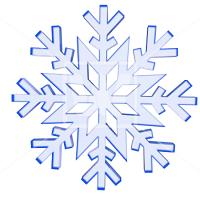
When my basic college algebra classes begin solving equations containing one unknown, I tell them, they are inquisitive detectives looking for the unknown. My students' greatest difficulty is deciding what stays and what goes in an equation. In other words, which term should be cleared by using the inverse operation and which term should stay where it is?
I start by referring to the written equation as a teeter-totter or a see-saw which must always stay balanced. In other words, the equal sign is the pivotal point and both sides of that = sign must be the same. We also discuss the importance of the
"Whatsoever thou doest to one side of the equation, we must doest to the other". (Out of necessity, I admit that I was with Moses when he received the Ten Commandments, but it "fell upon me" to convey The First Commandment of Solving Equations to future mathematicians.)
 |
| One Unknown |
We begin with very simple equations such as:
x + 9 = 12. Here's the rub; a few of my students know the answer and do not want to show any of their work. Maybe some of you have this type of student as well. Since, after 40+ years, I am still unable to grade what is in their minds, I insist that all steps are written down. I explain that it's like riding a tricycle to ride a bicycle to ride a unicycle.
First, I instruct the students to look at the equation and determine which terms are out of place. (
Side note: Because my students are easily confused, at the present, we keep all of the unknowns on the left side and all of the numbers on the right side of the equal sign.) Let's go back to our sample of
x + 9 = 12. Because the
x is already on the left side of the equation, the students write a "Y" over it for the word, "Yes". The 9 is on the wrong side of the equal sign, so the students write a "N" over it for "No". Finally, they write a "Y" over the 12 since it is the correct place. They now have exactly what they want, a Y and N on the right side and a Y on the left side. They now must clear anything that has a "N" over it. The students recognize they if they use the inverse operation of addition, they can clear the 9. They therefore subtract 9 from each side of the equation resulting in an answer of 3.
Many algebra teachers will have the students write the step
x + 0 = 9. You may wish to include this step in the process, but since my college students readily see that +9 and -9 make zero, they put an X over the two opposites to show that they cancel each other out or when added together, they equal zero.
What if the equation is: 3 =
y - 4? This always freaks my students out; yet, if they do the yes/no process, they will discover that they have two "no's" and one "yes", not a yes, no = yes. This means they can rewrite the equation as y - 4 = 3 to get a yes, no = yes. The problem can now easily be solved like the one above.
 |
Unknown on both sides
of the equation |
The next step is what to do when an unknown appears on both sides of the equal sign. Usually, my students are sure they are incapable of solving such a difficult problem, but let's use the yes/no method and see what it looks like.
Notice in the sample on the left that we have a yes, no = no, yes. We start by clearing the "N" on the left hand side of the equation by using the inverse of -9. We then go to the right side and clear the
y by using the inverse operation of addition. (Yes, I am aware both can be cleared at the same time, but again simple and methodical is what is best for my mathphobics.) We then divide each side by 4 resulting in the answer of 3. When the problem is completed, my students are amazed and proud that they could solve such a long equation. (You might notice in the illustration, a dotted line is drawn vertically where the equal sign is. This helps my visual students to separate the two sides of the equation.)
If any of you try this approach with your students or have a different method, I would love to hear from you. Just leave a comment and a short statement of how this process worked for you or what process you use that is even better. That way, we can learn from each other.
I have made math tutorials for the college where I teach, and one of them goes through this process in detail. If you are interested and would like to hear me sing as well, go to:
Yes/No.








